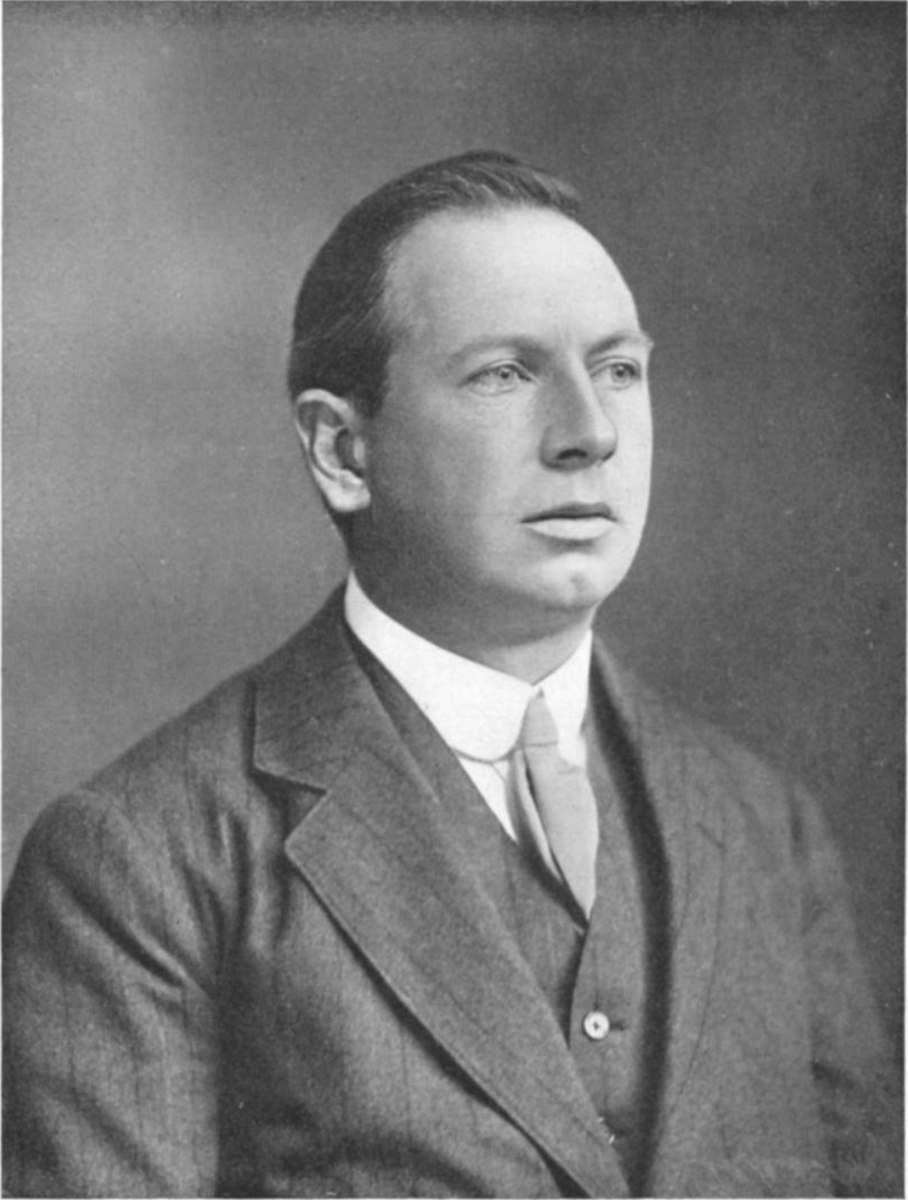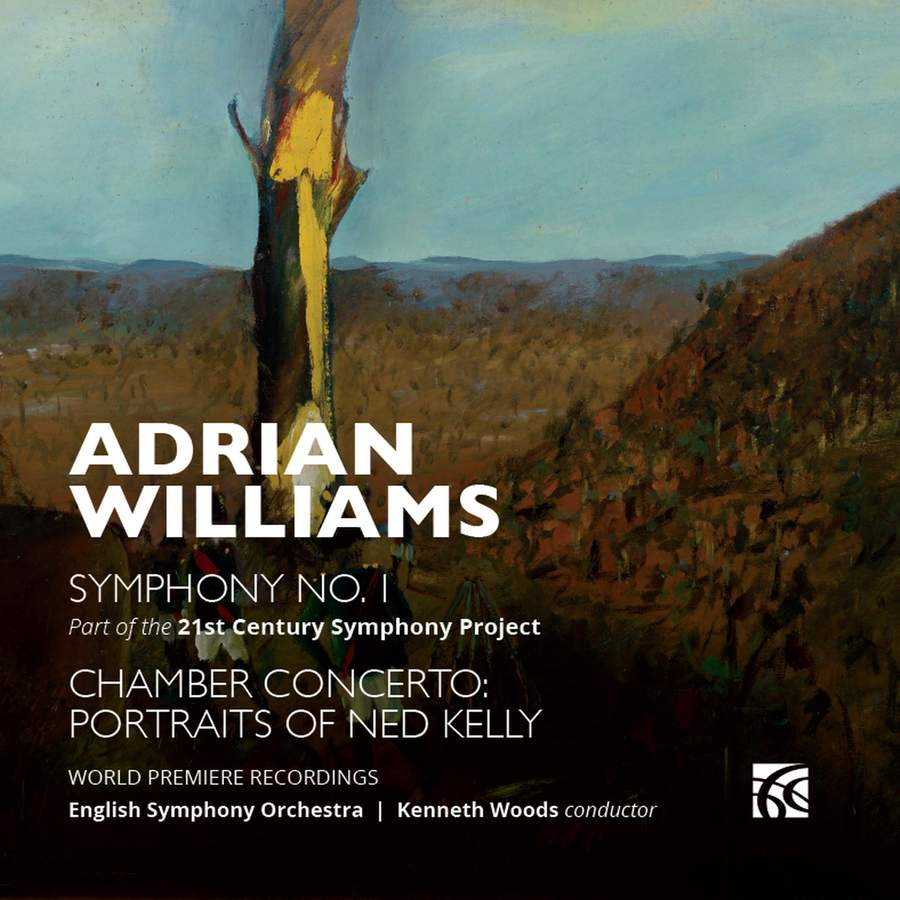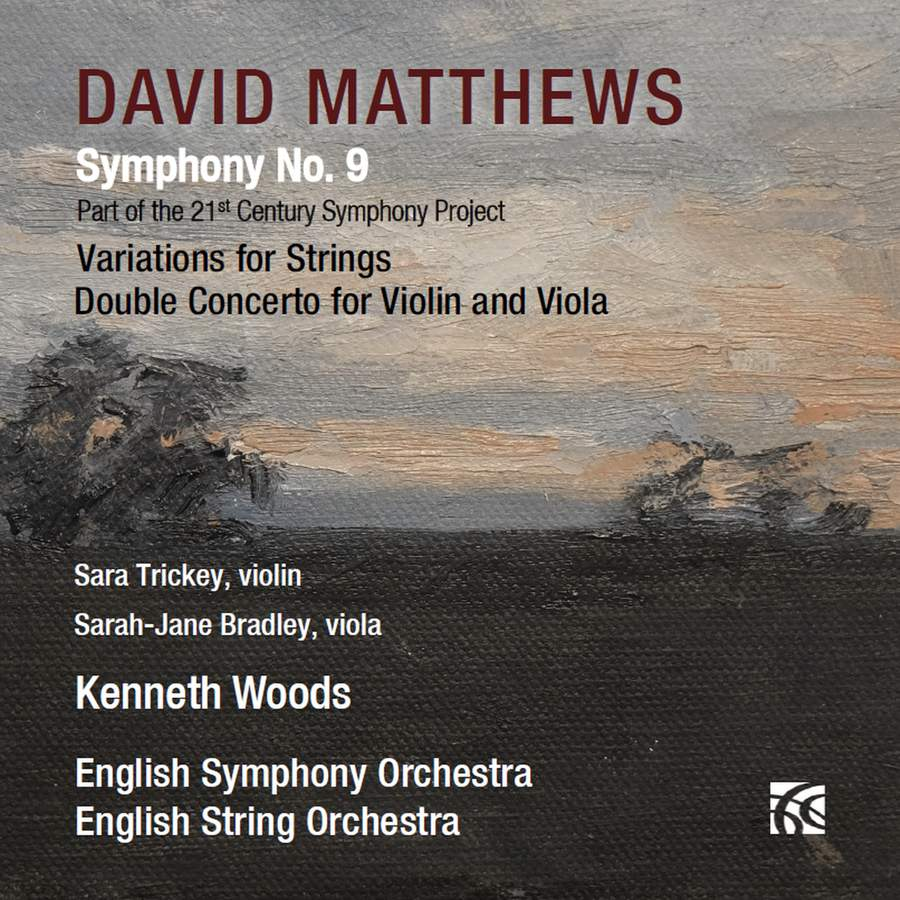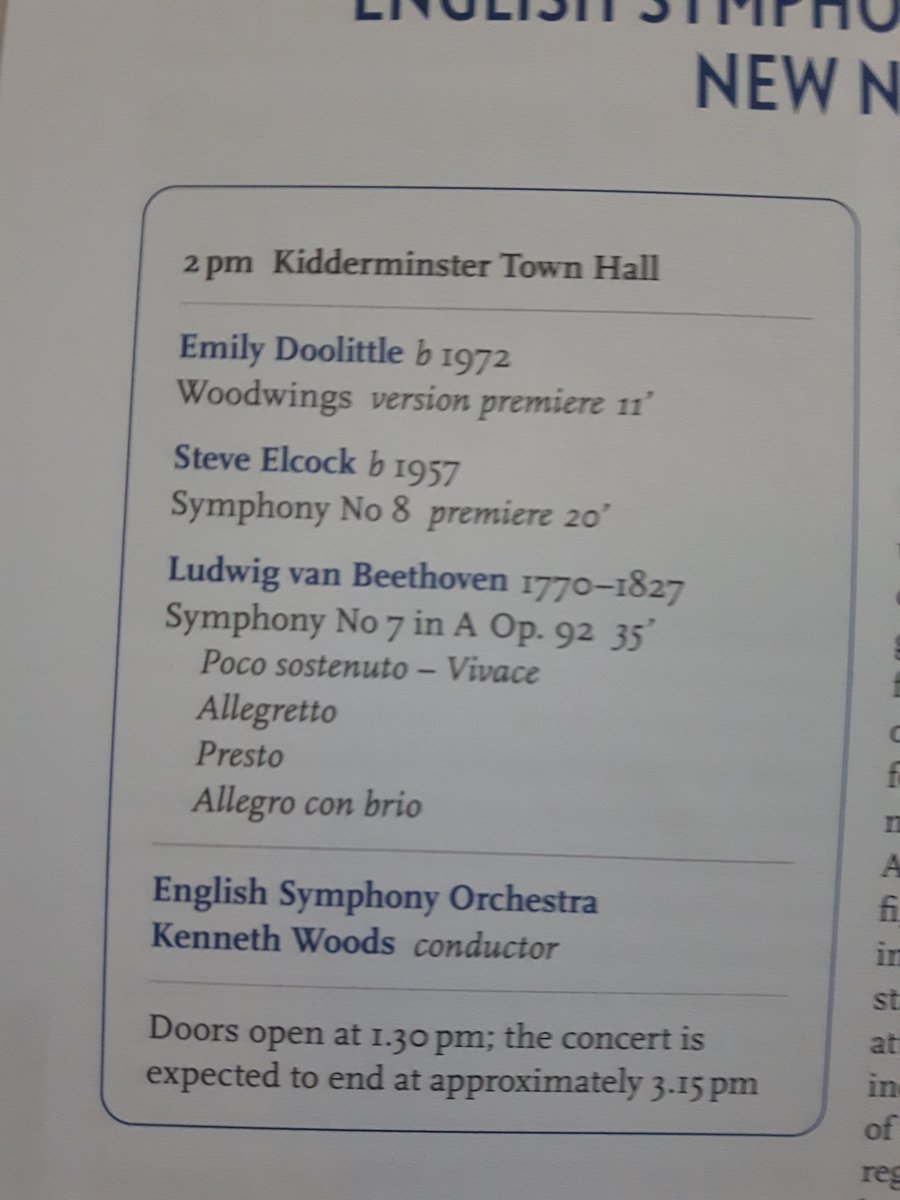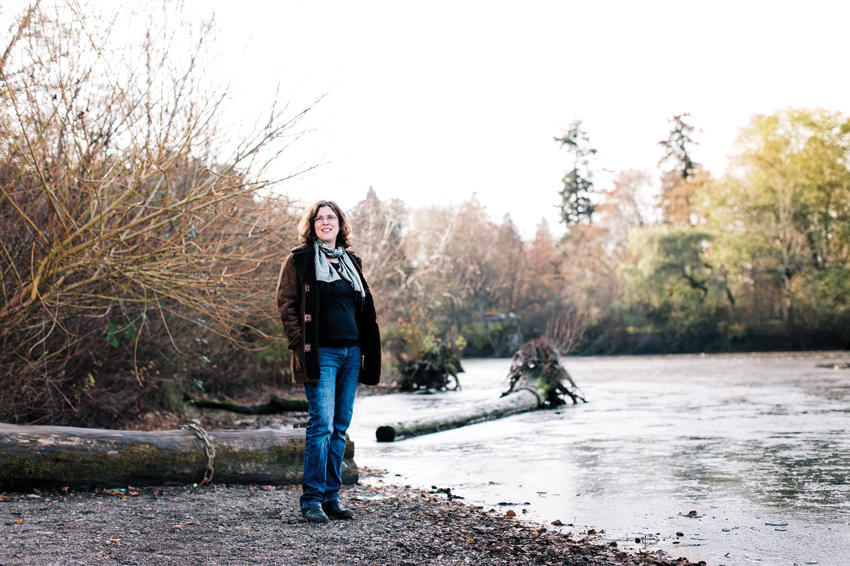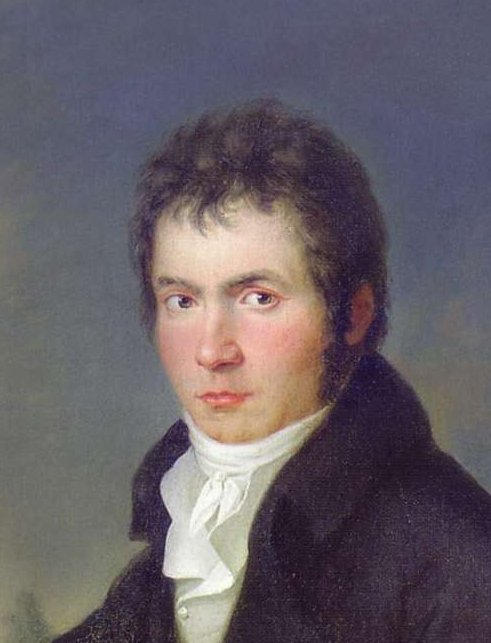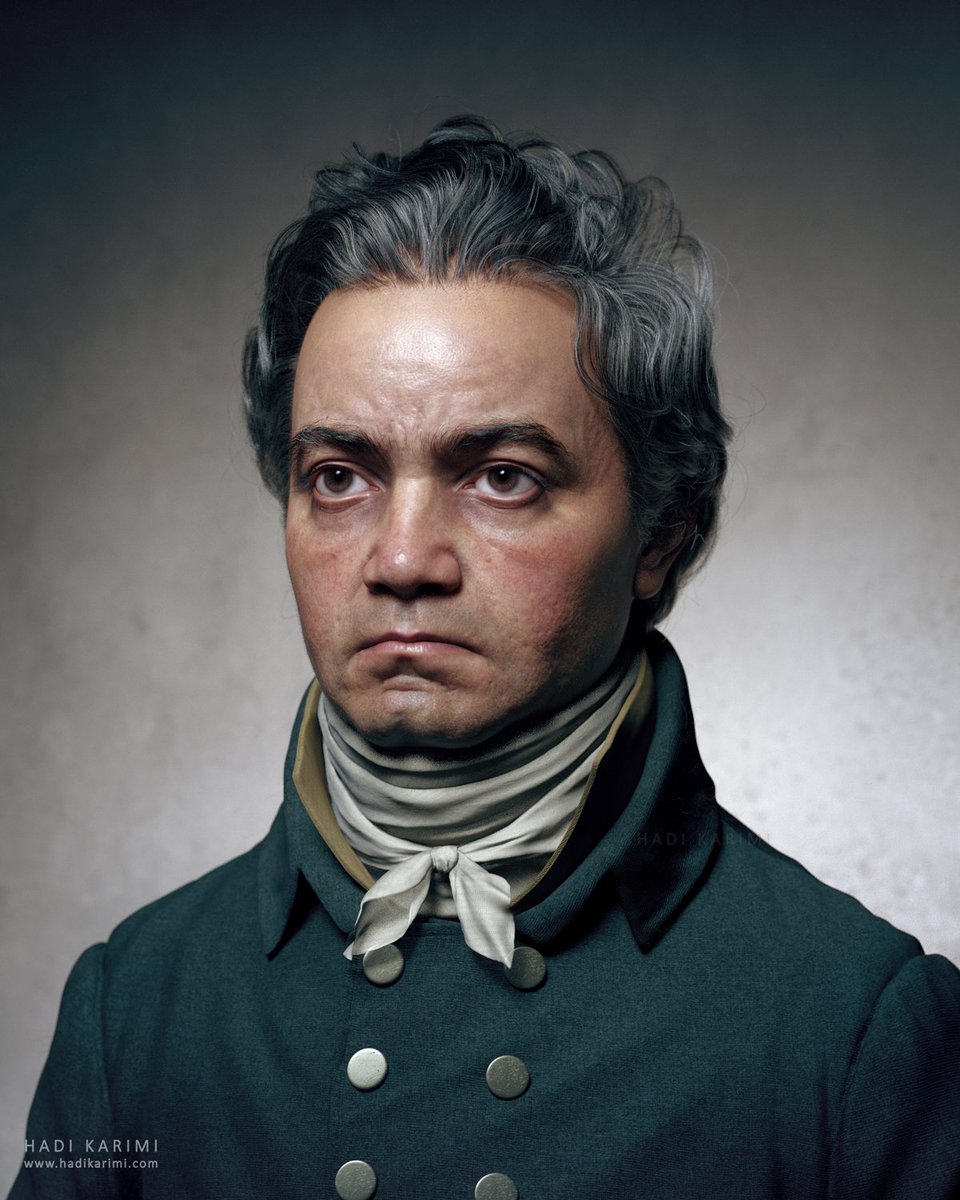#TheCompleteBeethoven #344
Symphony No. 6 in F major, Op. 68 "Pastoral" (1807-8)
1/ "No one can love the country as much as I do. For surely woods, trees, and rocks give back the echo which man desires to hear." - Ludwig van Beethoven, 1810
Symphony No. 6 in F major, Op. 68 "Pastoral" (1807-8)
1/ "No one can love the country as much as I do. For surely woods, trees, and rocks give back the echo which man desires to hear." - Ludwig van Beethoven, 1810
2/ As a boy Ludwig and his father Johann van Beethoven went for hikes along the River Rhine. "Everlastingly dear to me", these journeys sometimes lasted several days. They stand out like a beacon among many more unhappy memories of his strict, abusive, alcoholic father. 

3/ The adult Beethoven continued to took regular walks among the woods and fields around Vienna, and nature was a constant source of inspiration:
"You will ask me whence I take my ideas? I cannot say with any certainty: they come to me uninvited, directly or indirectly..."
"You will ask me whence I take my ideas? I cannot say with any certainty: they come to me uninvited, directly or indirectly..."
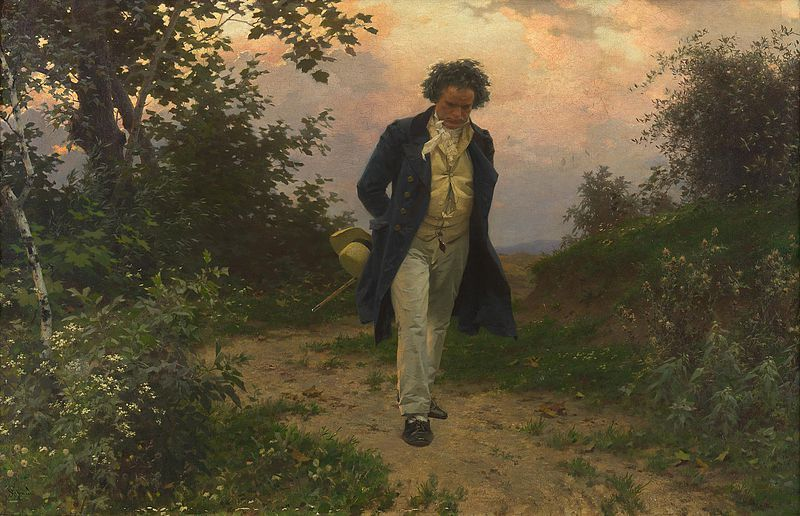
4/ "... I could almost grasp them in my hands, out in Nature's open, in the woods, during my promenades, in the silence of the night, at the earliest dawn ..." 

5/ "... They are roused by moods which in the poet's case are transmuted into words, and in mine has tones, that sound, roar and storm until at last they take shape for me in notes."
Nature was not only Beethoven's instructress in art; she was also his refuge and his solace.
Nature was not only Beethoven's instructress in art; she was also his refuge and his solace.

"... continued to TAKE regular walks ..."
I understand why @Twitter doesn't have an #EditButton, but CURSES!!! I wish they did.
I understand why @Twitter doesn't have an #EditButton, but CURSES!!! I wish they did.
6/ In 1801, Beethoven revealed his deafness in a letter to his friend Franz Wegeler: "If I continue in the same state ... engage a house for me somewhere in the country, amid beautiful scenery, and I shall then become a rustic for a year, which may perhaps effect a change." 

7/ His experience of the countryside also had a strong religious dimension. From an 1810 sketch sheet:
"My unhappy ears do not torment me here. It seems as if every tree in the countryside spoke to me, saying, 'Holy! Holy!' In the forest, enchantment! Who can express it all?"
"My unhappy ears do not torment me here. It seems as if every tree in the countryside spoke to me, saying, 'Holy! Holy!' In the forest, enchantment! Who can express it all?"

8/ Beethoven can of course. In 1801 as he confessed his fears to Wegeler, he composed a piano sonata that transmuted many of those feelings into sound. The title "Pastoral" was added by a publisher, but it stuck because it fits the music's mood perfectly.
https://x.com/deeplyclassical/status/1247768322701062144?s=20
9/ "It was Beethoven's tendency, having mastered a genre, to withdraw for a time ... and turn elsewhere" - Maynard Solomon
The "calm and reflective" (Solomon) Pastoral Sonata feels like a blessed release after its dark and stormy minor-key predecessor.
The "calm and reflective" (Solomon) Pastoral Sonata feels like a blessed release after its dark and stormy minor-key predecessor.
https://x.com/deeplyclassical/status/1246871268898504708?s=20
10/ As with the Pastoral Sonata, composed together with the Moonlight in 1801, so it was with the Pastoral Symphony and its companion the Fifth, "a thunderclap in musical history" (Jan Swafford). The first sketches for both appear side-by-side in 1803-4.
https://x.com/deeplyclassical/status/1290165185001398272?s=20
11/ The Fifth's ideas are clearly marked "Sinfonia" and include a movement plan. Directly after them Beethoven wrote "lustige Sinfonia" (Joyous symphony). However, the sketches that eventually became parts of the Pastoral are only scattered fragments. Nothing yet connects them. 

12/ One four-bar sketch became the country dance of the third movement's merry-making peasants. Another fragment eventually served as a model for the end of the symphony. However, the idea that most clearly prefigures the Pastoral is this one, marked "Murmurs of the brooks". 

13/ Under it he wrote "the greater the brook, the deeper the tone." Its mood, meter and motion directly anticipate the Pastoral's slow movement.
Beethoven's ideas then slept by the brook for four years, during which he produced another "joyous symphony".
Beethoven's ideas then slept by the brook for four years, during which he produced another "joyous symphony".
https://x.com/deeplyclassical/status/1282559228281081861?s=20
14/ Beethoven may have revisited these ideas in 1807, but it was summer 1808, with the Fifth Symphony finished, before he set to work in earnest on a work in the pastoral tradition.
Wait. Aren't the symphonies all radical innovations that break with the past?
Err, nope.
Wait. Aren't the symphonies all radical innovations that break with the past?
Err, nope.
15/ And yes. Beethoven's magic blends two well-established but often trivial genres, the pastoral and the characteristic symphony, with his own dynamic and energetic symphonic style to create a musical potion that's in some ways even more radical than his "revolutionary" Fifth. 



16/ Composers had been mimicking nature in programme music for centuries. Vivaldi's Four Seasons, a smash hit across Europe in the 18th century, portrayed singing birds, barking dogs, babbling brooks, drunken dancers, stamping feet and summer storms.
17/ Among the host of music inspired by Vivaldi's Seasons were three symphonies by Haydn, based on different times of the day. Each built vivid tone painting into a satisfying symphonic structure, and the last ends with a spectacular storm (17:14).
18/ Characteristic symphonies became a popular genre. This five-movement "Pastoral Symphony", composed in the mid-1780s, was published by Speyer who also published the teenage Beethoven at the time. Its storm arrives in the third movement (12:44).
19/ Knecht's "symphony" also ends with a song of thanks to the creator, but isn't very symphonic. Nor are similar works by #BeethovensContemporaries Anton and Paul Wranitzky, who worked for Beethoven's patron Prince Lobkowitz, and who he knew personally.
20/ For music of the highest quality combining the pastoral tradition, tone painting, and praise to the Creator, we return to Haydn. His two great oratorios, The Creation and The Seasons were wildly popular in Vienna at the start of the 19th century.
21/ Haydn's Seasons contains musical pictorialism as vivid as anything in Vivaldi's: a ploughman whistling (the Surprise symphony!), birds singing (and dying!), sunrise, nightfall, dancing peasants and, of course, a thunderstorm that approaches (1:02:15) and hits (1:04:00).
22/ The characteristic symphony genre seldom aspired to Haydn's heights, relying more on novelty than substance for its effect.
"Each act of tone painting, as soon as it is pushed too far in instrumental music, loses its force." - Beethoven, 1808
"Each act of tone painting, as soon as it is pushed too far in instrumental music, loses its force." - Beethoven, 1808
23/ Beethoven was intent that he should not only express his joy in nature and his love of God the creator, but also satisfy the highest standards of structure and originality.
"Even without a description the whole will be understood, as it is more feeling than tone painting."
"Even without a description the whole will be understood, as it is more feeling than tone painting."

24/ Beethoven would raise the pastoral genre "to an artistic level that his fellow musicians, however competent, were not likely to reach" - Lewis Lockwood
(He wouldn't always maintain the standards he set himself in 1808, but that's another story)
(He wouldn't always maintain the standards he set himself in 1808, but that's another story)
25/ If he raised it high enough, Beethoven hoped the music might be sufficient to tell the story itself and make extra-musical descriptions superfluous:
"Whoever has any idea of country life can imagine for himself what the composer has in mind without a great many titles."
"Whoever has any idea of country life can imagine for himself what the composer has in mind without a great many titles."
26/ Beethoven attached descriptive labels to some of his sketches, but these were discarded in the finished version. However, he did ultimately give each movement and the symphony itself an evocative title, and choosing these cost him almost as much labour as the music itself. 

27/ He eventually settled on "Pastoral symphony, or recollection of country life (more expression of feeling than painting)"
Catchy, huh?
But what makes it 'pastoral'? Before we look at Beethoven's music in detail, let's have a brief recollection of country life before 1808.

Catchy, huh?
But what makes it 'pastoral'? Before we look at Beethoven's music in detail, let's have a brief recollection of country life before 1808.


28/ On hillsides throughout Europe, shepherds had been playing bagpipes since before the days of Ancient Rome. This fine fellow is playing the Zampogna, a type of Italian bagpipes. Note the persistent drone, the lilting 12/8 rhythm and the key, F major.
29/ Classical composers utilized these characteristics when they wanted to evoke the world of shepherds, peasants and a simpler life in harmony with nature. Bach uses the same drone, lilting rhythm and key here, and his Pastorella ends with a joyful song.
30/ Over time these characteristics became musical signals familiar to Beethoven's listeners whether they were country folk or townies. Two keys had particular pastoral associations: "rustic, idyllic and lyrical" G major and "calm, contemplative" F major.
31/ How does Beethoven combine the pastoral with the symphonic in his Pastoral Symphony? It's time for a closer look at the music itself. I'll use the performance in this video as my reference. Be warned - there will be timings!
32/ "From the opening measures, we are in a domain of sound as different from that of the Fifth as we can imagine" (Lewis Lockwood)
Beethoven begins in the most serene F major imaginable; the opposite of No. 5, which didn't even start in its home key.
Beethoven begins in the most serene F major imaginable; the opposite of No. 5, which didn't even start in its home key.
https://x.com/deeplyclassical/status/1293068116436627456?s=20
33/ The opening note (0:24) is a bagpipe drone on violas and cellos. Over it violins unfold a graceful melody that pauses to breath in the fresh country air (0:28) before continuing its walk in the sunshine. We couldn't be further from the Fifth's storm and stress. Or could we?
34/ "The Sixth Symphony is the anti-Fifth" (Jan Swafford)
Beethoven worked on the two symphonies in tandem. The Pastoral's musical language is every bit as single-minded, and sometimes it pushes the boundaries of symphonic thinking even further than its famously obsessive twin.

Beethoven worked on the two symphonies in tandem. The Pastoral's musical language is every bit as single-minded, and sometimes it pushes the boundaries of symphonic thinking even further than its famously obsessive twin.


35/ Listen to its opening once more (0:24-0:29). The Fifth needed five bars and two fermatas to set out its DNA. The Pastoral establishes its character and the first movement's main material in one less of each. The first three bars are all major motifs. How's that for economy? 

36/ The rest of the opening theme encapsulate the means by which the whole symphony will wend its way through its day in the country. The next two bars develop the first two (0:30), then immediately repeat (0:32). The melodic line of the next four (0:34) is also repeated (0:38).
37/ The rhythm of bar two then repeats again and again (0:41-0:53) over static harmony, with only the dynamic changing, slowly rising then falling again. The music is literally going nowhere, but it's certainly expressing a feeling of happy anticipation for the journey ahead.
38/ Such passages are everywhere in the Pastoral. Of course, obsessive motivic repetition was a cornerstone of the Fifth's first movement too. There it charged the air with frenetic energy as the melodic line leapt and dived and the harmony drove the music relentlessly forward.
39/ Here similar means achieve the opposite expressive ends: "Beethoven creates a new kind of symphonic rhetoric in the Pastoral, a universe in which lulling repetition rather than teleological development defines the structure, on the small and large-scales" (Tom Service)
40/ Motivic patterns repeat over harmony that's often static or very restricted for huge paragraphs. Passages of literal repetition, slowly transforming as they progress (such as the start of the development at 5:13), are so frequent the music can feel positively minimalist. 



41/ Those stable harmonies slow down the music's pace, and the sense of peace and well being is enhanced by the specific harmonies used. Instead of the customary dominant C major, the principal contrasting key is the subdominant, commonly felt to increase musical relaxation.
42/ There is a second subject group in the dominant (1:31-2:43), but it plays no part in the development which opens in the subdominant B-flat major. After flowing serenely to the expected C major (7:00), the development detours into B-flat (7:13) to enter the recapitulation.
43/ The first dwelt on the subdominant, so the B-flat second movement 'Scene by the Brook' (11:40) feels familiar, like rediscovering an old favourite beauty spot. Waves lap languidly in soothing 12/8 time. What could be more apt for a Pastoral Symphony?
44/ No matter how popular it was with the public, pictorial music invoked critical scorn. Beethoven himself "frequently laughed at musical paintings and scolded trivialities of this sort. Haydn's Creation and The Seasons were frequently ridiculed." (Ferdinand Ries)
45/ Haydn disdained some of his own depictions in The Seasons: "This whole passage with its imitation of the frogs was not my idea: I was forced to write this Frenchified trash."
He'd have been wide-eyed and open-mouth at the bird calls that end the Scene by the brook (22:31).
He'd have been wide-eyed and open-mouth at the bird calls that end the Scene by the brook (22:31).

46/ The music has certainly been "more expression of feeling" until now. Without the title, even the brook is evoked rather than overtly depicted, but here is pictorialism of the most literal kind: nightingale, cuckoo, quail. Has Beethoven pushed tone painting "too far"? 





47/ These particular birds sing an emotional and spiritual song as well:
"The birds he chose all have traditional symbolism: the nightingale represents love, the cuckoo is the harbinger of summer, the quail associated with divine providence in the bible" (Jan Swafford)
"The birds he chose all have traditional symbolism: the nightingale represents love, the cuckoo is the harbinger of summer, the quail associated with divine providence in the bible" (Jan Swafford)
48/ They're also the culmination of a process. Melodic figures - long trills and chirping grace notes in the violins, a rising arpeggio in the flute - have increasingly filled the texture as the movement progresses. The end solidifies the 'feel' of birdsong into something real.
49/ The birdsong episode (the birds are named in the score) is also the coda to a sonata form of greater intricacy and subtlety than any previous symphonic slow movement. Beethoven intertwines the formal, expressive and pictorial dimensions of music like no one had done before.
50/ The supposedly conservative 4th Symphony included an important innovation: Scherzo and trio are repeated to create an ABABA form. The Pastoral's "Merry gathering of country folk" develops it to create another unprecedented fusion of the formal, expressive and pictorial.
51/ The peasants trip the light fantastic in the 3/4 scherzo (24:13) and stomp their feet (and tankards) in the 2/4 trio (25:45). Rhythmic dualism is matched by harmony switching back and forth between F and D major (24:18) like they were the closest of relatives. (They're not)
52/ There's a village band of horns (24:55), oboe (25:03), clarinet (25:16) and bassoon, who's clearly the worse for drink. He keeps waking up from his stupor (25:05, 25:10 etc) unsure of whether to play three notes or four.
The trio also has two keys: F and B-flat (26:06).
The trio also has two keys: F and B-flat (26:06).
53/ Beethoven originally planned a five-part scherzo for the Fifth, but at the last minute he bottled it, perhaps because he was also recalling it in the finale. The Fifth's formal innovation is the extraordinary transition from the scherzo to the finale.
https://x.com/deeplyclassical/status/1292360128340144128?s=20
54/ What does Beethoven do in the Pastoral? After a scherzo that outdoes even the 4th, he outdoes the "revolutionary" 5th by making the transition a movement of its own which out-storms all previous musical storms, including both of Haydn's smash hits.
55/ The scherzo's last occurrence (28:33), compressed and sped up, brings festivities to a climax. It also heightens the contrast when the first rumbles of thunder and drops of rain (29:07) bring the party crashing to a halt and send everyone running for cover. Then ... BOOM!
56/ The thunder begins on D-flat, a note alien to the harmony of all that has gone before. It creeps up chromatically (another new harmonic concept in this symphony) to F minor. The arrival of the first sustained minor-key passage unleashes the storm in all its fury (29:36).
57/ Rumbling thunder in cellos and basses; literally howling winds; lightning flashes across the whole orchestra (29:54, 30:08 etc). Unstable harmony, peasants shivering in fear - music doesn't get any more pictorial than this. The storm's climax (31:40) is positively cinematic.
58/ One of Beethoven's most-read books was "Reflections on the Works of God in Nature" by Christoph Christian Sturm (how appropriate):
"When the storm and tempest have threatened, how soon has light been restored to the heavens, and joy and gladness again smiled on the earth!"

"When the storm and tempest have threatened, how soon has light been restored to the heavens, and joy and gladness again smiled on the earth!"


59/ In it Beethoven found a summary of scientific knowledge at the end of the Age of Enlightenment, presented as "a vision of nature as divine revelation, as visible scripture and an endless hymn of praise: a holiness he found outside of scripture and churches." (Jan Swafford)
60/ To Sturm, the perfection of nature revealed the hand of the "Infinite, Almighty and Supreme Being" who created it. Beethoven adds religious symbolism to his finale's hymn of praise by introducing an instrument usually found only in churches and village bands: the trombone.
61/ For centuries the trombone played for dances in town and at court; it heralded the arrival of great people and great news; most of all it accompanied worshippers when they sang to their God. The one place you didn't find it was a symphony orchestra.
62/ Their entry at the height of the storm (31:40) was the first time Beethoven's audience had heard them in a secular concert work. When they support the finale's hymn of praise (33:43), their symbolism makes it clear to whom thanks is being given.
https://x.com/deeplyclassical/status/1293796139880374277?s=20
63/ And who is giving thanks? All of nature and mankind. As the storm subsides our trio of birds return (32:37): oboe, then flute, then the clarinet sings a song (32:53) taken up by the cowherd on his mountainside (33:01) and the villagers down below.
64/ Previous religious works had flopped, but here Beethoven approached God on his home turf. The symphony was his musical church, his natural place of worship.
"Never mind Missa Solemnis; the Pastoral is LvB's spiritual testament." - @Ruralmaestro
"Never mind Missa Solemnis; the Pastoral is LvB's spiritual testament." - @Ruralmaestro
https://x.com/deeplyclassical/status/1287293836620976128?s=20
65/ Above a sketch for this passage Beethoven wrote "Lord, we thank thee!" Instead he makes God implicit in the music of the finale (33:09), fusing a holy trinity of forms into a flawless whole expressing "Cheerful and thankful feelings after the storm."
https://x.com/artistturner/status/1046190593075027975?s=20
66/ The finale returns us to a pure F major in a pastoral 6/8 metre. Sonata, rondo and variations become one creation, each reprise of the 'Ranz de Vaches' a new way to sing praise to the Lord. God is in his heaven, the shepherd's on his hill, and all is right with the world. 

67/ Clarinet and horn return to guide us on our way through the middle section (34:59) and recapitulation (36:53). A final alphorn call (42:32) fades away into the distance as the sun sets. It's time to say farewell to our idyllic natural world.
https://x.com/artistfriedrich/status/1296181577827913728?s=20
68/ That last call, the first to stress the tonic F, sends us home with a final benediction: "the peace of nature and the peace of the soul that the work had promised from the beginning, the feeling for which the composer had been longing all his life." (Lewis Lockwood)
The end.
The end.

@threadreaderapp unroll
• • •
Missing some Tweet in this thread? You can try to
force a refresh


